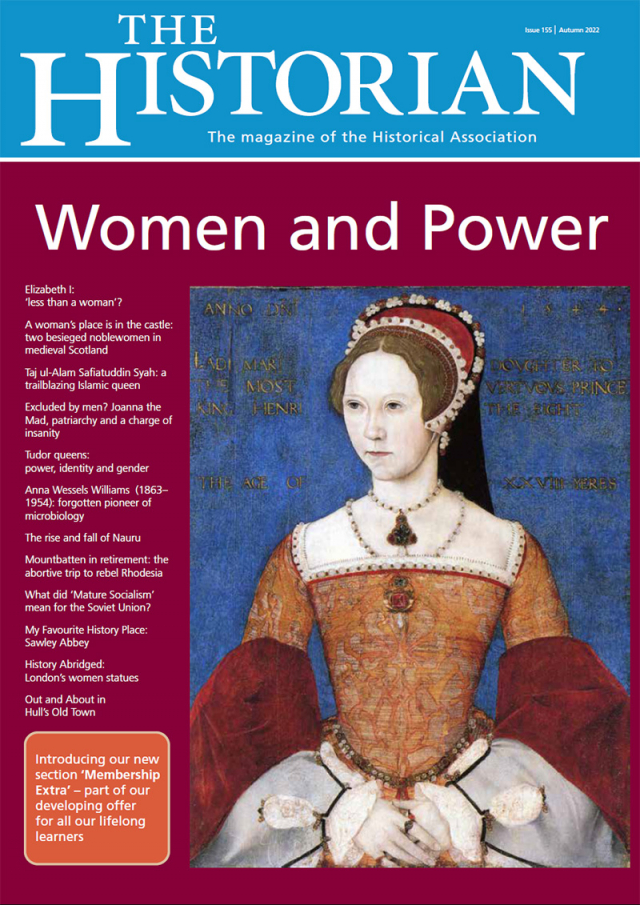The Historian 155: Out now
The magazine of the Historical Association

Editorial: Women and power
Read The Historian 155: Women and power
Since the publication of our Jubilee edition in the summer, the nation has mourned the passing of Queen Elizabeth II. Her death marks the end of an era that will, no doubt, be studied in the future as a self-contained unit, like the ‘Victorians’ or ‘Tudors’. For most of us living through the second Elizabethan period, this seems somewhat artificial; life has continued much as before. But, in another seventy years, the accession of our new monarch will perhaps mark a turning point, and the age of Elizabeth will be a hotly debated part of history.
As the late queen was the Historical Association’s Patron for many years, it seems fitting that this issue features pre-modern women and power. Morven French and Iain A. McInnes reveal the important but understudied role played by women in the Scottish Wars of Independence. Several early modern queens also receive our attention. Gregory Gifford explores the contested historical legacies of the two Tudor queens, Mary and Elizabeth. Tracy Borman examines Elizabeth I’s femininity, while Glyn Redworth’s article on the Spanish queen Joanna the Mad investigates why it was in the interests of her male rivals to present her as insane. Khadija Tauseef broadens our horizons by introducing Sultanah Taj ul-Alam Safiatuddin, the trailblazing seventeenth-century queen of Aceh in modern-day Indonesia.
Our non-themed articles are wide-ranging. Adrian Smith examines the role that the earl of Mountbatten was intended to play in the aftermath of Rhodesia’s Unilateral Declaration of Independence, while David Shipp surveys the period of ‘mature socialism’ in the USSR following the removal of Kruschev in 1964. In addition, we have a short article from Aadam Patel on the Pacific Island of Nauru, which was entered into the Historical Association’s Young Historian competition, and a report from Ralph Houlbrooke on the Reading Branch’s Jubilee Project.
Of course, we also have our regular features. Real Lives introduces us to German microbiologist Anna Wessels Williams; our Out and About takes us to Old Hull, home of one of the HA’s branches and a city with an important mercantile past; while Steve Illingworth presents his favourite history place, Sawley Abbey, scene of one of the most turbulent Tudor uprisings, the Pilgrimage of Grace. In History Abridged, James Sewry investigates the contested role of statues in public commemoration.
Finally, over the last couple of years, the HA has asked its members what they want as part of their membership. In response, we have begun to develop some of the sections in The Historian and over the next few editions we will bring you some new features and different content, as requested by you. We start, in this edition, by bringing you a classic article from our archive in which Eamonn Gearon describes the African empires of Ghana, Mali and Songhai at the height of their power and the impact of European interest. Although it was written 10 years ago, it has as much relevance now as it did then. We hope that this new section of the magazine will allow new members to access some of the best articles from our archives, and remind our longstanding members of pieces that they might have enjoyed in the past, but don’t forget that Historian members are able to access any of the back copies of the magazine as well as a seemingly endless supply of other articles, podcasts and films through the HA website.
If you have any comments on this new feature, or anything else to do with the magazine, please get in touch with us by email: thehistorian@history.org.uk or post, as another new aspect of the magazine will be a Letters page.

